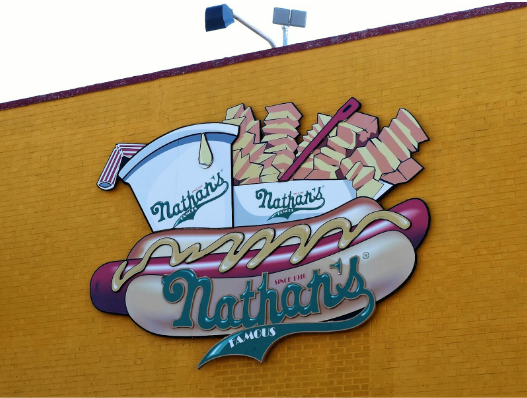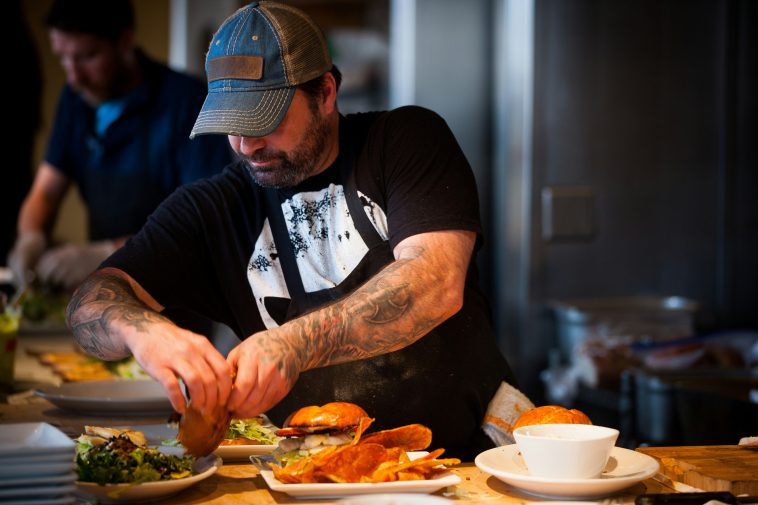Creating a memorable brand voice for your e-commerce food business is not just important; it’s the secret ingredient for standing out in a crowded market! A unique voice helps you bond with customers and keep your messaging consistent, whether posting on social media or crafting product descriptions.
In this guide, we’ll dive into the fun process of developing a brand voice and tips on creating a memorable brand voice, how to stand out in the food industry, and how to craft a unique and effective visual identity for food brands. Let’s give your food business the voice it deserves!
What is a Brand Voice?
Your brand voice is what everyone expects when interacting with a business – one that makes you feel welcome, understood, and excited to have you around. It is the distinct personality that comes through in your communications. It’s how you convey your brand’s values, mission, and overall personality to your customers, whether through your website, social media, or product packaging.
Brand Voice vs. Brand Personality
While often used interchangeably, brand voice and brand personality have distinct roles. Your brand personality is how your brand would be described if it were a person — fun, serious, quirky, or reliable. Your brand voice, on the other hand, is how that personality is expressed through language, tone, and communication style.
For example, a fun and quirky food business might have a playful and lighthearted voice, using puns and casual language to engage with its audience. In contrast, a high-end gourmet food business might use a more sophisticated and refined voice.

Why Your Brand Voice Matters in the Food Industry.
Your brand voice is more than just the words you use — it’s a powerful tool that can significantly impact the success of your food business. Here’s how a strong brand voice can drive success:
1. Building Customer Trust Through Your Food Brand’s Voice
In the world of e-commerce, especially in the food industry, trust is everything. 81% of customers purchase from brands that they trust. Customers want to feel confident that the products they’re buying are of high quality and that the brand is reliable. A consistent and authentic brand voice builds that trust, showing customers that your business is dependable and true to its values. One of the best ways to showcase that is to build brand trust through social media.
2. Stand Out In A Competitive Market
The e-commerce market is highly competitive. Your e-commerce brand voice can make you stand out from the others offering similar products. A unique voice can highlight what makes your food business special — whether it’s your sustainable practices, artisanal recipes, or fun and personal customer experience.
3. Attract and Retain Customers – Increase Customer Engagement
Customers are drawn to brands that resonate with them on a personal level. A well-defined brand voice helps you connect with your target audience, making it easier to attract new customers and keep existing ones coming back. Customer engagement encourages brand loyalty, as customers feel a stronger connection to a brand that speaks their language and shares their values.
4. Improving Brand Voice Recognition
A consistent brand voice helps create a recognizable identity. Over time, customers will associate your specific tone and style with the branding of your food business, making it easier for them to recognize your content, whether it’s an email newsletter, Instagram post, or blog post. Brand recognition is key to building long-term success.
Examples of Brands with Strong Brand Voices
Several food brands have nailed their brand voice and continue to excel because of it:
Ben & Jerry’s: They use a friendly, conversational tone that reflects their fun, outgoing personality.
Innocent Drinks: Innocent has a witty, playful voice that doesn’t shy away from humour, which perfectly aligns with their fun, natural product aspirations.
Trader Joe’s: The supermarket chain is known for its casual, welcoming tone, making grocery shopping feel personal and approachable.
Non-food brands like Nike (empowering and motivational) and Apple (minimalist and innovative) also offer excellent examples of strong brand voices.
Challenges To Expect and How to Overcome Them When Creating a Brand Voice For Your Food Business
Building and keeping up a strong brand voice for your e-commerce food business can be tricky. Here are some branding challenges you might encounter along the way—and strategies on how to work around them:
1. Inconsistency Across Platforms
Maintaining a clear and consistent brand voice across social media, your website, and other mediums is crucial. To avoid inconsistency, create a brand voice guide that outlines the tone, language, and style that should be used in all communications that the team can follow.
2. Lack of Clarity
If your brand voice is too vague, it may not resonate with your audience. Conduct audience research to understand your customers’ preferences, and use that data to define your voice more clearly. Write down key points that your brand voice should follow, such as tone, key phrases, and communication style.
3. Bland and Generic Voice
To avoid a bland or generic voice, focus on what makes your brand unique. Use your mission statement and values to create a more specific and memorable voice that reflects what your business is truly all about.
4. Overuse of Complex Language
Your brand voice should be simple and understandable, especially in a food business. Keep language straightforward and avoid jargon, while maintaining a level of professionalism. Using too many complex words can come across as confusing and unclear. A detailed and clear product description is key!
5. Finding The Right Balance Between Professionalism and Personality
Creating a balance between professionalism and personality can be tricky. Establish clear boundaries for your tone, ensuring it reflects both your brand’s expertise and its approachable personality. You should strive to achieve a balance between being personal enough to encourage customer interaction and maintaining professionalism to create a sense of trust.
6. Adapting To Trends
In today’s climate, a new trend nearly shows up every week. While it’s important to keep up with industry trends, be careful not to lose what your brand is all about. Regularly update your brand voice to keep up with trends, but always remain true to your core values and mission statement.
7. Losing Authenticity
In an attempt to appeal to a larger crowd, some brands lose their authenticity. Stay true to your mission statement, and don’t try to be everything to everyone. Authenticity builds stronger, long-term relationships with customers!
While some of these challenges are common and can be expected in developing your brand voice for your food business, focusing on certain ways to develop your brand voice early on can help you avoid any sudden challenges that may come your way.
Ways to Develop Your Food Business’s Brand Voice
Creating a brand voice isn’t a one-size-fits-all process, you must craft and create your brand’s voice that specifically fits your food business. Your brand voice should uniquely reflect your food business’s values, mission, and audience. Now, let’s dive in on where to start:
Your Food Business’s Mission Statement
Before defining your brand voice, let’s start with the foundation behind it: your mission statement. Think of this as the heart of your food business’s branding, laying out who you are, what you stand for, and why you’re the one to watch in your industry.
What’s your food business all about? What do you offer, and why does it matter? For example, if you’re all about serving organic, home-cooked meals, your company statement should showcase your passion for quality and sustainability.
What makes your food business stand out? What sets you apart from the crowd? Maybe it’s your use of local ingredients, or perhaps your recipes have been passed down through your family for generations.
Why is your food business so personal to you? Share your story! People love a good backstory—so don’t hesitate to let them in on how your business came to life and why it means so much to you.
A mission statement becomes your compass, ensuring your brand voice is always in the right direction, stays true to your core values and resonates with your audience. A good way is following a checklist, that would help you in the process of creating an original mission statement.

Know Your Target Audience For Your Food Business
Knowing your target audience is crucial in shaping the brand voice for your food business. Your voice should resonate with the people who are most likely to buy your products.
Who is your primary audience? Are you targeting busy parents who need a quick, healthy meal, or are you catering to foodies who appreciate artisanal, gourmet items, that visually pop? Researching the demographics in the area of your business, and understanding the psychology of the various consumers can give you a clearer idea of who your target audience is, as well as digging into your competition, and looking into who they are primarily serving.
How do they relate to your product? Knowing what your audience values helps you tailor your brand voice. For example, health-conscious consumers might prefer a tone that is informative and reassuring, while younger audiences might respond better to a fun, trendy voice.

Determine Your Brand’s Overall Style.
When crafting your brand voice, it’s important to think about two main elements: your brand’s tone of voice and its visual identity. These two should work hand-in-hand together to create a cohesive and engaging experience for your customers. Let’s break it down further.
Tone of Voice: Reflecting Your Brand’s Personality
Your tone of voice communicates how your brand sounds to customers, and it should reflect your brand’s personality. Different tones create different impressions:
Friendly and approachable: Ideal for casual, family-run, or community-focused food businesses. This tone is warm and conversational, making customers feel at ease. It’s perfect for businesses like home-based bakeries or meal prep services that emphasize a personal connection with who they are serving.
Professional and authoritative: Best for gourmet food brands, fine dining establishments, or those selling premium products. A formal, confident tone reinforces expertise and quality, assuring customers they are purchasing something high-end and trustworthy.
Humorous and playful: Great for brands targeting younger audiences or offering fun, unique products like colourful snacks or desserts. This tone adds personality and makes your brand memorable, but balance is key, and it is important to avoid sounding insincere or unprofessional, we explore further in the article how to find that balance.
Serious and purposeful: Works well for brands that emphasize sustainability, organic products, or ethical practices. This tone is more thoughtful and grounded, showing that your business has a deeper mission beyond just selling food.
Your tone of voice should consistently reflect your brand’s values and appeal to your target audience. It sets the emotional tone of how you communicate your brand, making it easier for customers to connect with your business. A meal delivery service targeting busy professionals, for example, might want a professional, yet motivating tone. On the other hand, a food business selling indulgent desserts could adopt a more fun and indulgent voice, encouraging customers to treat themselves.
Visual Identity: Matching Voice to Aesthetic
Your visual identity — the colours, fonts, imagery, and design elements you use — should align with your brand voice. A first impression is all it takes for a customer to choose or avoid your business, and it relies a lot on how your business presents itself visually. People engage in more content visually than any other type of medium. Forming a visual identity for your food business can feel tedious, it is a long process, but perhaps the most important one in developing your brand voice.
A great place to start is creating a unique logo for your brand, something that stands out. If someone were to search up “home bakeries”, yours should stand out among the rest, not by being something it’s not, but by embracing what it is. Differentiating your food business online is a key marketing strategy. Designing a logo can feel overwhelming, but with free software like Canva, it can be a fun, and creative tool in the process of creating your logo.
Another big power move in visual identity is colour. Colour plays a significant role in people’s lives. We associate colours with emotions, using bright colours for happiness, and darker colours for moments of sadness. However, in the food business, dark colours have their place and appeal. Darker colours are often used to enhance the sense of professionalism and luxury, while brighter colours may bring out the fun, and excitement that a food business wants to represent.

Want to see how a food business could use visuals in food branding? Here are some visual styles paired with certain tones of voice that fit them:
Colourful and punchy: If your brand uses bright, vibrant colours and playful imagery, your voice should be equally lively. A fun, casual tone will complement this style, helping to create a dynamic and energetic feel. This works well for food brands that emphasize fun, like cupcakes or candies, ideal for food businesses that aim to create Birthday Cakes with fun decorations and designs, or desserts catered towards kids (or everyone!).
Minimalistic and refined: A clean, simple design with neutral colours and modern fonts pairs best with a concise, polished voice. This tone projects sophistication and elegance, perfect for gourmet food businesses or brands targeting a high-end market. A great example can be a business which specializes in grand, beautifully crafted, wedding cakes.
Rustic or artisanal: For brands focused on handmade, small-batch, or farm-to-table products, a natural, authentic design — using earthy tones, hand-drawn logos, or rustic packaging — works well with a simple, warm voice. This combination conveys craftsmanship and care. A great example can be home bakeries that focus on freshly baked goods and breads, or someone who provides freshly grown vegetables.
Luxury and premium: If your brand visuals lean toward rich, dark colours and high-quality images, your voice should match with a formal, indulgent tone. This creates a sense of exclusivity and is ideal for gourmet or fine-dining food businesses.
Your visual identity and tone of voice should always work together to create a consistent brand identity. When these two elements align, they reinforce your mission statement and make it easier for customers to emotionally connect to your food business. It plays a big part in building trust between the brand and the customer. A mismatch — for example, fun and playful visuals paired with overly formal language — can create confusion and lessen the trust in your brand.
Some examples:
Again, Ben & Jerry’s is a great example. Their logo is a hand-drawn cow with the name written in a fun font. Their brand name pops out on shelves because it is unique among other ice cream products, as their bright and playful colours and designs represent the bold, creative flavours they put out, and align with their comedic approach to their branding.
Another great example is Chipotle. Their logo is represented by a chilli pepper enclosed in a circle, following a minimalistic design. The sleek and neat design, along with the bold fonts, conveys simplicity, quality, and authenticity, which align with the brand’s goal of serving fresh and carefully sourced ingredients.

When determining your brand voice’s style, ask yourself:
How do I want customers to feel when they interact with my brand?
What impression do my visuals currently give, and does my voice align with that?
Is my voice consistent across all platforms — website, emails, social media, and packaging?
Keeping all this in mind, ensuring your brand voice aligns seamlessly with your visual identity, you create a memorable and engaging experience that connects with your customers. Not only does this strengthen your presence, but it also helps your e-commerce food business remain authentic and stand out in a competitive and crowded market.
Conclusion:
Creating a unique brand voice for your e-commerce food business is key to standing out in a crowded market. By communicating brand values, knowing who your audience is, remaining consistent, and establishing an emotional connection with food customers, you’ll build an authentic brand experience that speaks to customers and drives your food business to success.
Your brand voice is the personality of your business.
It builds trust, helps you stand out, and creates loyal customers.
Focus on your values, who you’re talking to, and how you communicate to shape a brand voice that’s memorable and authentic.
Avoid falling into the trap of sounding bland or inconsistent by setting clear brand guidelines and staying true to your mission.





GIPHY App Key not set. Please check settings